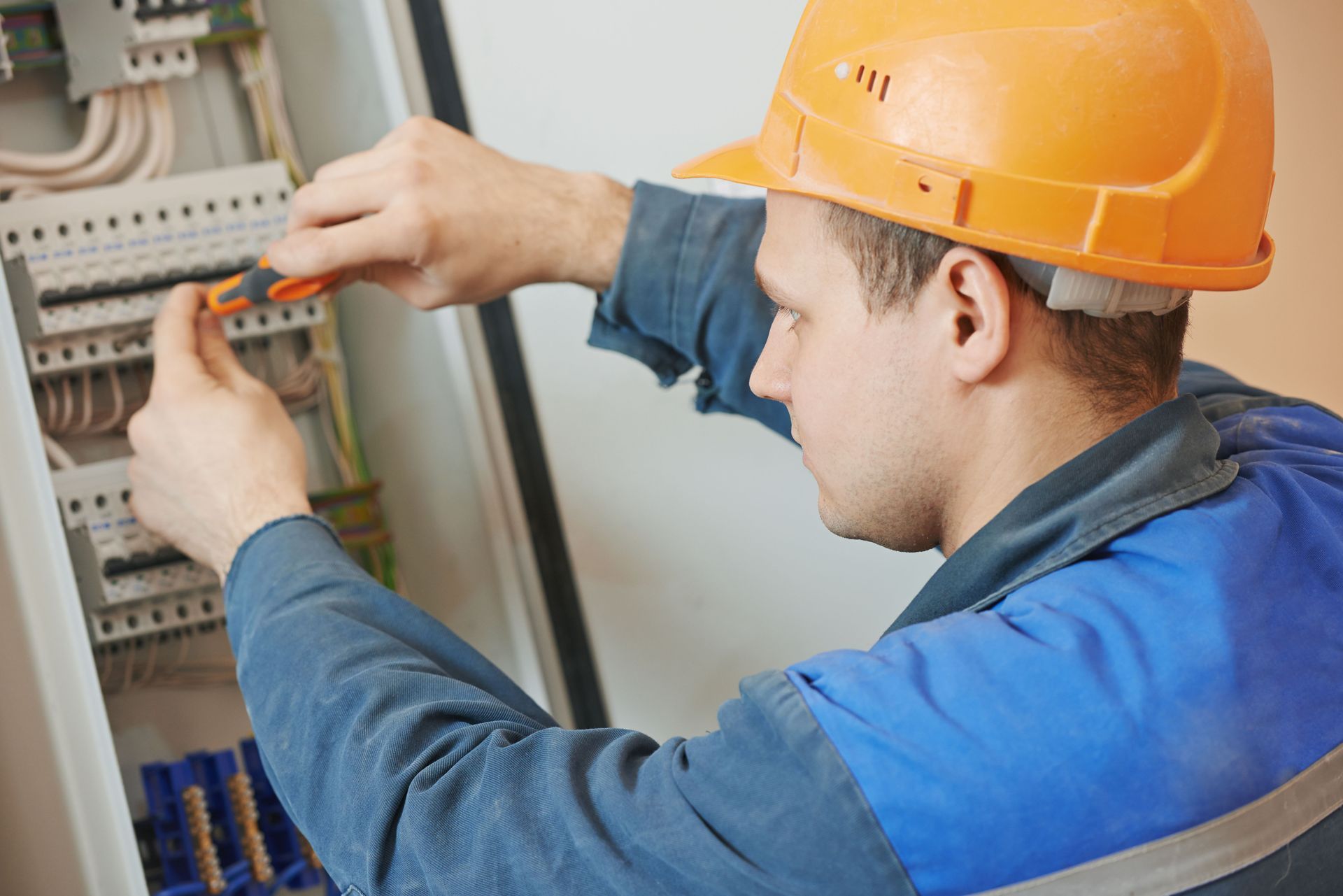Keeping your home safe against winter electrical hazards
January 22, 2024
Winter Electrical Safety Tips
Winter is when most of us stay indoors and out of the cold, chilly weather with blankets, space heaters, and a warm drink. While you are snuggled up , you should think about your electrical safety.
With the cold weather we have been experiencing, many people depend on electrical devices to keep their homes warm. We use more electricity in these months and can stress the electrical system. Here are a few tips to prevent an electrical emergency, and to keep your family safe.
Space heaters
Using space heaters is a great way to keep extra warm during the winter. They can also be the biggest hazards in our homes.
• We need to keep 3 feet of space around heaters in every direction.
• Don’t plug a space heater into an extension cord. It can cause the cables to overheat.
• Do not leave the heater unattended. Disconnect the heater when not in use.
• Keep it free from blankets, curtains, rugs, and any other debris that could cause things to overheat or catch fire.
• Replace Damaged Electrical Cords
• When you bring space heaters, heated blankets, or anything you store most of the year out for use, they should be inspected before using.
• If you find any frayed, worn, or broken electrical cables, it is recommended to have them replaced or fixed to prevent a fire or shock risk.
Click here
to read more about space heater safety.
Keep Cords Safe
Try to avoid running electrical cords or power strips under rugs or behind furniture. This can cause the wires to wear and can become frayed. Covering cords can block the heat from escaping. If a cord feels hot to the touch or is damaged in any way, do not use it. Hot cords can be a fire hazard.
What happens if there is an electrical fire? Click here to read how to put out an electrical fire.
Do not use extension cords as permanent wiring. If you find yourself using the extension cord for something permanent, call us to quote getting you set up with a new electrical outlet.
Follow Light Safety
While the holidays are over, it is now popular to have a holiday tree up all year long. Make sure you follow the safety tips for string lights:
• Aim for no more than three strings of light per circuit.• Always unplug or turn off string lights when you are not home or go to bed for the night.• Replace broken or missing bulbs to prevent electrocution or fires.
Call Us
Following these guidelines can help keep your home safe from electrical issues. If you find there are any issues with the electrical system in your home, make sure you call a licensed electrician. The team at KrisLee Electric is ready to meet all your home’s needs. Contact KrisLee Electric
to schedule an appointment today!


Thanksgiving today is a warm, cozy holiday filled with good food, family, and football. But imagine trying to pull off your Turkey Day traditions without electricity—no oven, no lights, no parade on TV, no fridge full of leftovers! Electricity plays a huge part in how we celebrate Thanksgiving now, and it’s easy to forget that it wasn’t always this way. Let’s take a little journey through history to see how far we’ve come—and how power has changed the way we celebrate the season. 🕯️ Before the Flip of a Switch: Thanksgiving in the 1800s When Abraham Lincoln declared Thanksgiving a national holiday in 1863, most homes relied on oil lamps, wood stoves, and hand-powered kitchen tools. Cooking a full Thanksgiving meal meant: Chopping wood for fuel Baking pies in cast iron ovens Storing perishables in iceboxes, not refrigerators Lighting the dinner table with candles or gas lanterns There were no electric carving knives, no slow cookers, and certainly no "smart ovens." ⚡ The Spark of Modern Comfort: Electricity Enters the Scene Electric power began lighting up American homes in the late 1800s, but it wasn’t until the 1920s–30s that electricity started becoming more common in middle-class homes—just in time to revolutionize the Thanksgiving experience. Electric ovens made cooking faster and more precise Refrigerators extended food storage Electric lighting meant more family and guests could gather late into the evening Radios and, later, televisions brought entertainment to the holiday table Fun Fact: The first Macy’s Thanksgiving Day Parade with a television broadcast aired in 1948—and it’s been a Thanksgiving staple ever since! 🦃 Thanksgiving in the Age of Smart Homes Fast forward to today, and we’re cooking turkeys with Wi-Fi ovens, setting timers with smart speakers, and managing the entire meal with a phone app. Modern Thanksgiving might include: Programmable smart thermostats to keep guests comfortable LED holiday lights that save energy and reduce fire risk Backup generators ensuring nothing interrupts the big meal EV chargers for guests arriving in electric vehicles Watching the game in 4K while the robot vacuum cleans up crumbs 💡 We’re Thankful for Progress—and for You We’re grateful for the modern power that keeps our homes safe, warm, and full of life—especially around the holidays. And we’re even more thankful for the customers and community who trust us to keep that power flowing year-round. Whether you're upgrading your kitchen, installing smart devices, or making sure your panel is ready for holiday guests, we’re here to help. Contact us for a pre-holiday electrical inspection or service—so your Thanksgiving can be powered by peace of mind. Wishing you a bright, warm, and happy Thanksgiving from all of us at KrisLee Electric! 🦃




Share On: